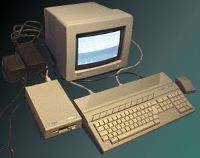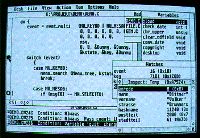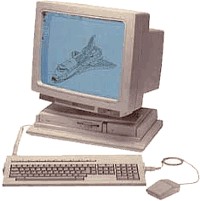
But I also felt the lack of support for modules and data encapsulation in Basic, so I decided to learn C (sounds like a contradiction today, but hey, this was 1988) using Borland Turbo C, which came along with a great graphical development environment for GEM. Phoenix on the other hand was a relational database system, that shipped with a very nice IDE. I learned about relational database modeling, and implemented some simple database applications.

Modula2 was the language of choice at my first university courses, but that wasn't too much of a change from the old Pascal days. Luckily, Modula2 compilers existed for the Atari ST as well, so I didn't have to spend my time at the always crowded university lab in front of those Apple Macs with 9-inch monitors.
In 1991 I purchased Atari's next generation workstation, the Atari TT-030. It was equipped with a Motorola 68030 processor running at 32Mhz, a 80MB HD and 8MB RAM.

But Atari did not manage to make the TT a winner, while the PC was gaining more and more market share. Notwithstanding all sentimental restraints, I finally bought a 486-DX2 in 1993.
